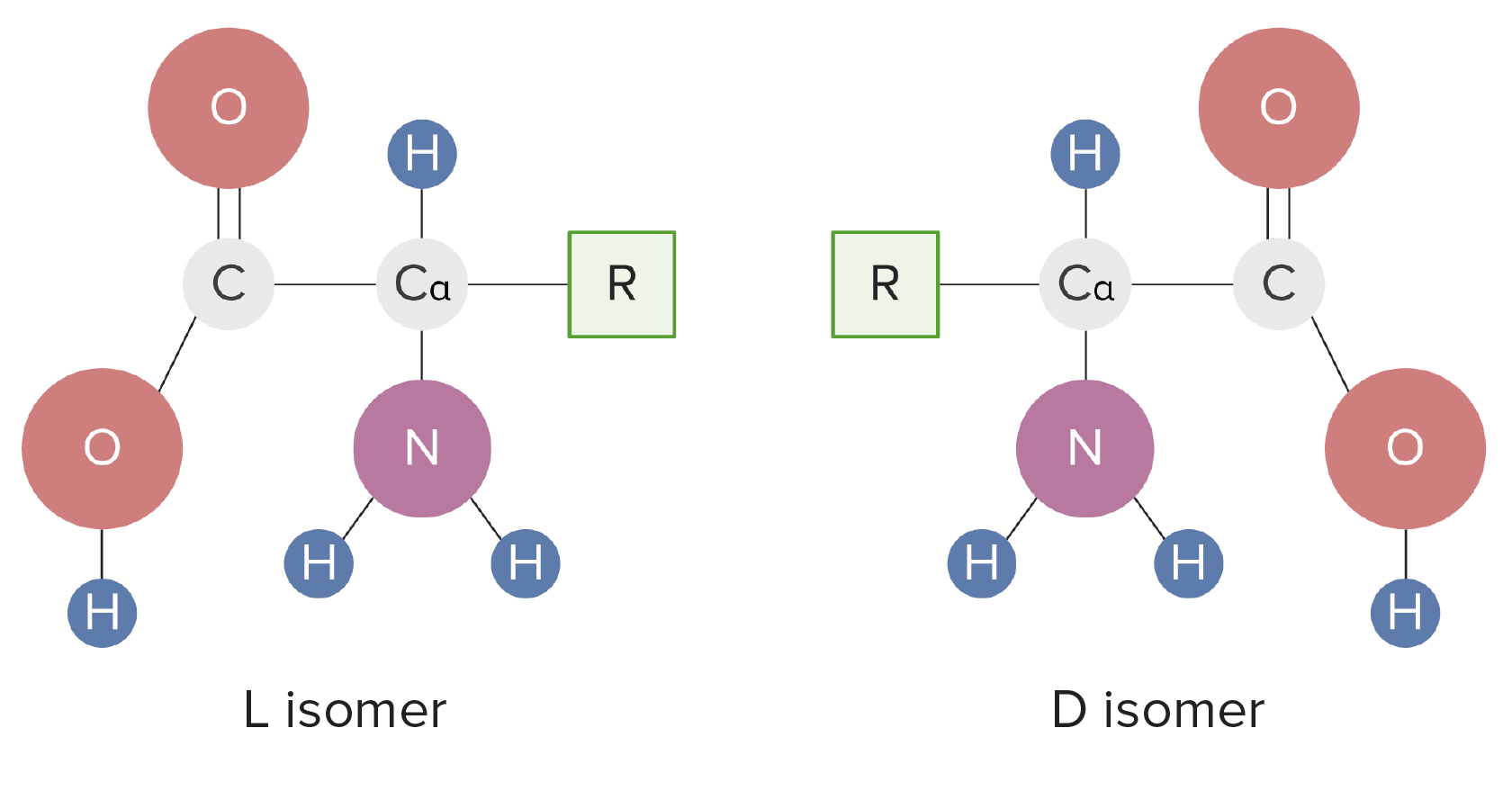Playlist
Show Playlist
Hide Playlist
R-group Categories – Amino Acids
-
02 Basic AminoAcids.pdf
-
Reference List Biochemistry.pdf
-
Download Lecture Overview
00:00 produced by natural chemistry. 00:01 Now there's other ways of organizing amino acids and one of the ways that we can organize amino acids is by their R groups. In this classification scheme we can see for example amino acids that have R groups that are what we describe as hydrophobic, meaning that they don't like to associate with water. This includes the aromatic amino acids of tryptophan, phenylalanine and tyrosine. It also includes amino acids that have aliphatic side chains, such as methionine, isoleucine, leucine, valine, glycine, alanine and proline. Another grouping of amino acids by R group are those that are hydrophilic, that is that they have an ability to bond with and associate with water. In this category we have the amino acids that contain hydroxyl groups in their side chain; this includes serine, threonine and tyrosine. Now you'll notice that tyrosine has been in two groups and these groups are not mutually exclusive and as you watch and read different authors, you'll see that authors will place amino acids in different groups based on their own perceived chemistries. 01:05 A second category when under hydrophilic is sulfhydryl containing, meaning that they contain a sulfur attached to a hydrogen. There's only one amino acid that's in this category, and that cysteine. The carboxyamides or carboxamides as they are also called, are amino acids asparagine and glutamine. The ionic amino acids are those that at physiological pH will have either a plus or a minus charge. These include the carboxylates, which are aspartic acid and glutamic acid. The carboxylates, when they ionize will have a negative charge. 01:45 The amines at physiological pH contain an extra proton and this extra proton gives these amines a positive charge, the amines of course include lysine, histidine and arginine. 01:57 Now as I said some amino acids appear in more than one category and these aren't exclusive in any way, and again I remind you that authors do differ in how they categorize amino acids. 02:06 What I would like to do now is go through and describe each of the amino acids and point
About the Lecture
The lecture R-group Categories – Amino Acids by Kevin Ahern, PhD is from the course Biochemistry: Basics.
Included Quiz Questions
Which order set of the three amino acids named below are listed in this order: Hydrophobic, Hydrophilic, Ionic?
- Leucine, Cysteine, Lysine
- Histidine, Threonine, Phenylalanine
- Arginine, Tyrosine, Asparagine
- Serine, Glutamine, Proline
- Cysteine, Tryptophan, Glutamic Acid
Customer reviews
3,9 of 5 stars
| 5 Stars |
|
4 |
| 4 Stars |
|
0 |
| 3 Stars |
|
1 |
| 2 Stars |
|
2 |
| 1 Star |
|
0 |
Simple, not over-complicated and understandable, all great signs of an amazing lecture.
Sorry, the following videos have the information that I was looking for, sorry again
It almost always fails to explain 'why'. These lists are available in any textbook. I was looking for an explanation to understand it. Also, visually it is looking at a table for 5 minutes, pictures could have explained better.
:) Thank you . everything in this lecture is clear. like it very much.




